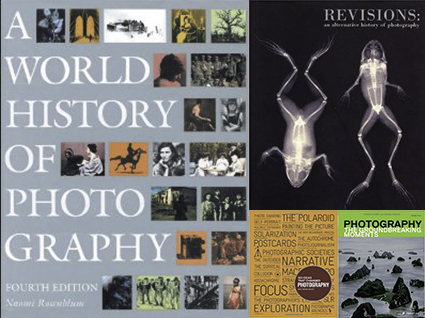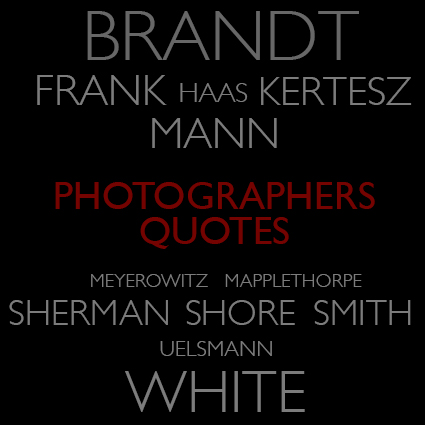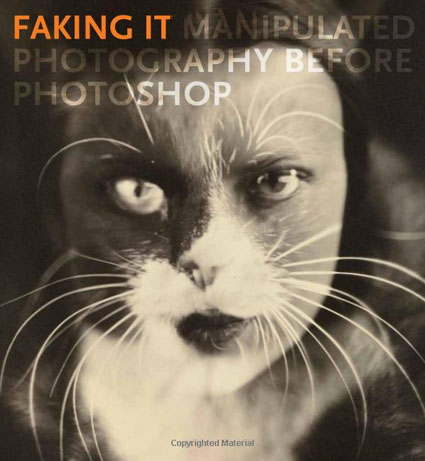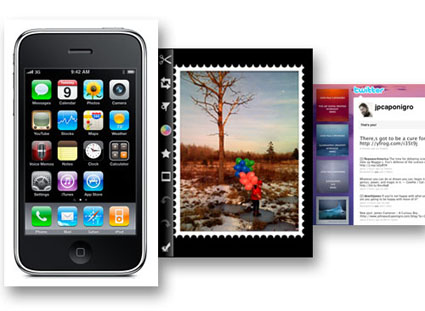Enjoy this collection of quotes by photographer Edward Steichen.
“No photographer is as good as the simplest camera.” – Edward Steichen
“I was coming to realize that the real magician was light itself…” – Edward Steichen
“Art for art’s sake is dead, if it ever lived.” – Edward Steichen
“It is an error common to many artists, (who) strive merely to avoid mistakes, when all our efforts should be to create positive and important work. Better positive and important with mistakes and failures than perfect mediocrity.” – Edward Steichen
“The precision of his (Harry Callahan) skill places his work beyond the tentative and the experimental stage. He is continually searching and exploring both himself and his surroundings. and in this exploration of the realm of places, people and things, contrasts and relationships, Callahan is no respecter of conventional technical formula or code. His delicate sense of pattern is an integral part of his photography and not a thing by itself.” – Edward Steichen
“Most photographers seem to operate with a pane of glass between themselves and their subjects. They just can’t get inside and know the subject.” – Edward Steichen
“A portrait is not made in the camera but on either side of it.” – Edward Steichen
“When I first became interested in photography, I thought it was the whole cheese. My idea was to have it recognized as one of the fine arts. Today I don’t give a hoot in hell about it. The mission of photography is to explain man to man and each man to himself. And that is no mean function.” – Edward Steichen
“Photography is a major force in explaining man to man.” – Edward Steichen
“There is only one optimist. He has been here since man has been on this earth, and that is man himself. If we hadn’t had such a magnificent optimism to carry us through all these things, we wouldn’t be here. We have survived it on our optimism.” – Edward Steichen
“A photograph is worth a thousand words, provided it is accompanied by only ten words.” – Edward Steichen
“When that shutter clicks, anything else that can be done afterward is not worth consideration.” – Edward Steichen
“Every other artist begins (with) a blank canvas, a piece of paper… the photographer begins with the finished product.” – Edward Steichen
“It is rather amusing, this tendency of the wise to regard a print which has been locally manipulated as irrational photography – this tendency which finds an esthetic tone of expression in the word faked. A MANIPULATED print may be not a photograph. The personal intervention between the action of the light and the print itself may be a blemish on the purity of photography. But, whether this intervention consists merely of marking, shading and tinting in a direct print, or of stippling, painting and scratching on the negative, or of using glycerine, brush and mop on a print, faking has set in, and the results must always depend upon the photographer, upon his personality, his technical ability and his feeling. BUT long before this stage of conscious manipulation has been begun, faking has already set in. In the very beginning, when the operator controls and regulates his time of exposure, when in dark-room the developer is mixed for detail, breadth, flatness or contrast, faking has been resorted to. In fact, every photograph is a fake from start to finish, a purely impersonal, unmanipulated photograph being practically impossible. When all is said, it still remains entirely a matter of degree and ability.” – Edward Steichen
“Photography is a medium of formidable contradictions. It is both ridiculously easy and almost impossibly difficult. It is easy because its technical rudiments can readily be mastered by anyonwith a few simple instructions. It is difficult because, while while the artist working in any other medium begins with a blank surface and gradually brings his conception into being, the photographer is the only imagemaker who begins with the picture completed. His emotions, his knowledge, and his native talent are brought into focus and fixed beyond recall the moment the shutter of his camera has closed.” – Edward Steichen
“The use of the term “art medium” is, to say the least, misleading, for it is the artist that creates a work of art not the medium. It is the artist in photography that gives form to content by a distillation of ideas, thought, experience, insight and understanding.” – Edward Steichen
“To make good photographs, to express something, to contribute something to the world he lives in, and to contribute something to the art of photography besides imitations of the best photographers on the market today, that is basic training, the understanding of self.” – Edward Steichen
“Once you really commence to see things, then you really commence to feel things.” – Edward Steichen
“Some day there may be… machinery that needs but to be wound up and sent roaming o’er hill and dale, through fields and meadows, by babbling brooks and shady woods – in short, a machine that will discriminately select its subject and, by means of a skillful arrangement of springs and screws, compose its motif, expose the plate, develop, print, and even mount and frame the result of its excursion, so that there will be nothing for us to do but to send it to the Royal Photographic Society’s exhibition and gratefully to receive the ‘Royal Medal’.” – Edward Steichen
View 12 Great Photographs By Edward Steichen here.
Watch a documentary on Edward Steichen here.
Find more quotes in The Essential Collection Quotes By Photographers.







